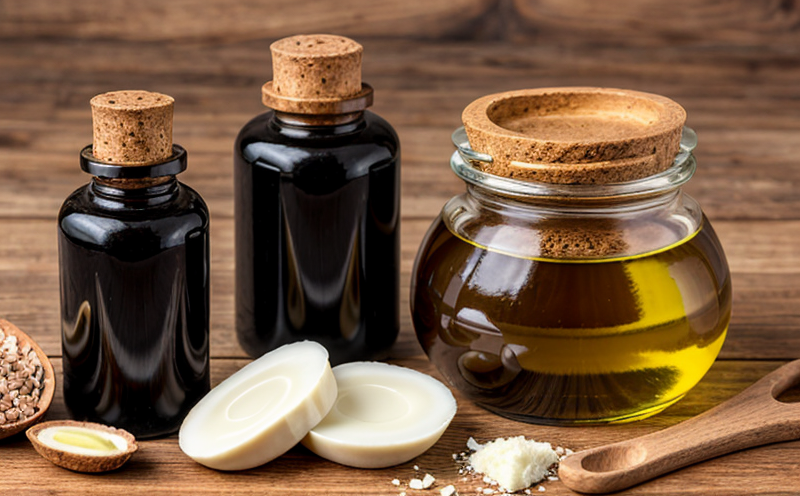USP Pesticide Residue Testing in Edible Oils
The United States Pharmacopeia (USP) method is a widely recognized standard for the determination of pesticide residues in edible oils. This stringent protocol ensures that the oils meet both regulatory and consumer safety standards, thereby safeguarding public health.
This service focuses on the analysis of pesticides commonly found in edible oils such as cottonseed oil, soybean oil, sunflower oil, corn oil, and others. The testing is crucial for compliance with international food safety regulations and quality assurance programs. Pesticide residues can affect the flavor, color, and nutritional value of these oils, making it essential to monitor their presence.
The method involves several steps including sample preparation, extraction, cleanup, and quantification using high-performance liquid chromatography (HPLC) or gas chromatography coupled with mass spectrometry (GC-MS). This approach ensures accurate detection even at trace levels of pesticides. Compliance with USP is critical for manufacturers aiming to export their products internationally.
The testing process starts by selecting a representative sample from the batch, followed by thorough extraction and cleanup steps. The extracted compounds are then analyzed using HPLC or GC-MS to identify and quantify pesticide residues. This comprehensive approach guarantees reliable results that meet international standards.
Our laboratory uses state-of-the-art instrumentation including Agilent 1260 Infinity LC System with ZQ5 MSD, Thermo Scientific GC-MS QQQ, and Waters UPLC coupled with quadrupole time-of-flight mass spectrometry (QTOF). These instruments provide high sensitivity and selectivity necessary for detecting low levels of pesticides.
Compliance with USP ensures that the edible oils are free from harmful pesticide residues, which is vital for maintaining consumer trust. This service supports food manufacturers in meeting regulatory requirements and enhancing product quality.
The testing process adheres to ISO 18394 and AOAC International standards ensuring consistency and reliability of results. The method also covers a wide range of pesticides including organophosphates, pyrethroids, carbamates, and fungicides which are commonly used in agriculture.
Scope and Methodology
| Step | Description |
|---|---|
| Sample Preparation | Select a representative sample from the batch. Homogenize the sample to ensure uniformity. |
| Extraction | Use an appropriate solvent for the extraction of pesticides based on their polarity and solubility. |
| Cleanup | Utilize solid-phase extraction (SPE) cartridges or other suitable methods to remove interfering matrix components. |
| Detection | Analyze the extracted compounds using HPLC or GC-MS for identification and quantification of pesticide residues. |
Benefits
- Ensure compliance with USP standards.
- Achieve consistent product quality and safety.
- Increase market access by meeting international food safety regulations.
- Enhance consumer trust through reliable test results.
- Support R&D efforts in developing safer agricultural practices.
International Acceptance and Recognition
The USP method is widely accepted by regulatory bodies across the globe. This includes countries like the United States, Canada, Europe, Australia, Japan, and many others that have adopted similar standards for food safety.
Compliance with this standard not only meets domestic requirements but also facilitates international trade. Many importers and buyers specify compliance with USP as a prerequisite for product acceptance.
The method's robustness is recognized by organizations such as the World Health Organization (WHO), Food and Agriculture Organization (FAO), and Codex Alimentarius Commission, further emphasizing its importance in global food safety frameworks.





